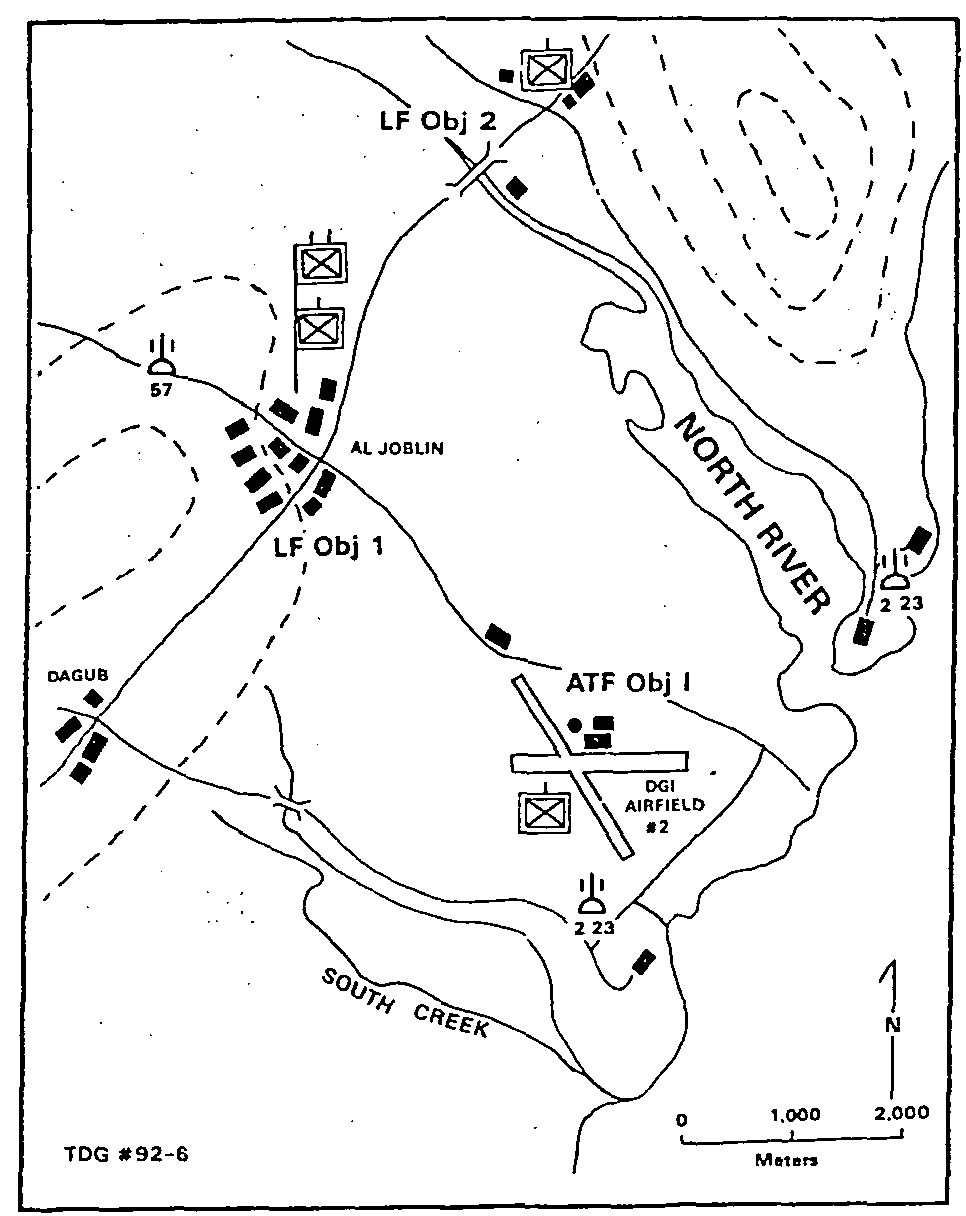Situation
 You are an infantry company commander for Fox Company, Battalion Landing Team 2/2, 26th Marine Expeditionary Unit (Special Operations Capable) (MEU(SOC)) operating in the country of Oriole, a known haven for the Al Bimi terrorist group. Your company has been tasked to conduct a heliborne raid to destroy an Al Bimi command and control cell located in makeshift huts at a camp in the foothills of a mountain range. Part of the MEU(SOC) commander’s intent calls for gathering as much intelligence as possible from the site. Al Bimi forces in the vicinity of the camp have been declared hostile. The S-2 (intelligence) reports that approximately 20 to 25 terrorists equipped with former Soviet bloc small arms are on the site.
You are an infantry company commander for Fox Company, Battalion Landing Team 2/2, 26th Marine Expeditionary Unit (Special Operations Capable) (MEU(SOC)) operating in the country of Oriole, a known haven for the Al Bimi terrorist group. Your company has been tasked to conduct a heliborne raid to destroy an Al Bimi command and control cell located in makeshift huts at a camp in the foothills of a mountain range. Part of the MEU(SOC) commander’s intent calls for gathering as much intelligence as possible from the site. Al Bimi forces in the vicinity of the camp have been declared hostile. The S-2 (intelligence) reports that approximately 20 to 25 terrorists equipped with former Soviet bloc small arms are on the site.
Other U.S. forces have conducted raids on other Al Bimi camps and have reported that Al Bimi morale is low and that significant numbers have surrendered rather than fight. Of those who chose to fight, however, resistance has been stiff.
On one of the raids a group of three terrorists feigned surrender and then shot at the U.S. forces trying to capture them. The MEU(SOC) commander has emphasized strict adherence to the law of war, specifically that no Marine will intentionally shoot any Al Bimi member who surrenders. He has further emphasized the intelligence value of captured Al Bimi and that he wants every effort made to minimize the likelihood of unintentionally injuring those who surrender.
Following tried and true raid tactics, you put together a basic scheme of maneuver involving a helicopter insert at a landing zone 10 kilometers away and a foot movement to the objective. You task Ist Platoon as a security element to isolate the objective and block enemy ingress and egress. You task 2d Platoon, reinforced with an M2AOG machinegun section from weapons platoon, as a support element to move to a position to provide supporting fires for the assault force, 3d Platoon. After giving your platoon commanders this general guidance, you tell them to develop a detailed plan and to back brief you.
A short while later the 3d Platoon commander comes to you with a troubled look on his face. “Sir, what are we supposed to do when pockets of the enemy are surrendering on different parts of the objective and other pockets are still firing at us? We know that they’ve faked surrender in the past. They’ve been declared hostile. Can’t we just light up a base of fire and sweep across the objective, even if we shoot terrorists who surrender?”
Requirement
In a time limit of 5 minutes, what guidance do you give your platoon commander? Can you rationalize not shooting the surrendering terrorists and potentially putting Marines at risk, or do you concede that sometimes you can intentionally shoot enemy who surrender? Can you make any suggestions regarding tactics? Provide a brief rationale for your guidance and, if it aids in description, a sketch of any tactical suggestions. Submit your solution to Marine Corps Gazette, TDG #02-9, P.O. Box 1775, Quantico, VA 22134, fax 703-630-9147, or e– mail <[email protected]>.






 Requirement
Requirement




 Develop your evacuation plan. It is not necessary to write a complete operations order, but describe your concept of operations, tasks or phases, contingency plans, and coordinating instructions. Provide a sketch of your plan and a brief explanation. Send your solution to Marine Corps Gazette, TDG 93-10, P. O. Box 1775, Quantico. VA 22134.
Develop your evacuation plan. It is not necessary to write a complete operations order, but describe your concept of operations, tasks or phases, contingency plans, and coordinating instructions. Provide a sketch of your plan and a brief explanation. Send your solution to Marine Corps Gazette, TDG 93-10, P. O. Box 1775, Quantico. VA 22134.